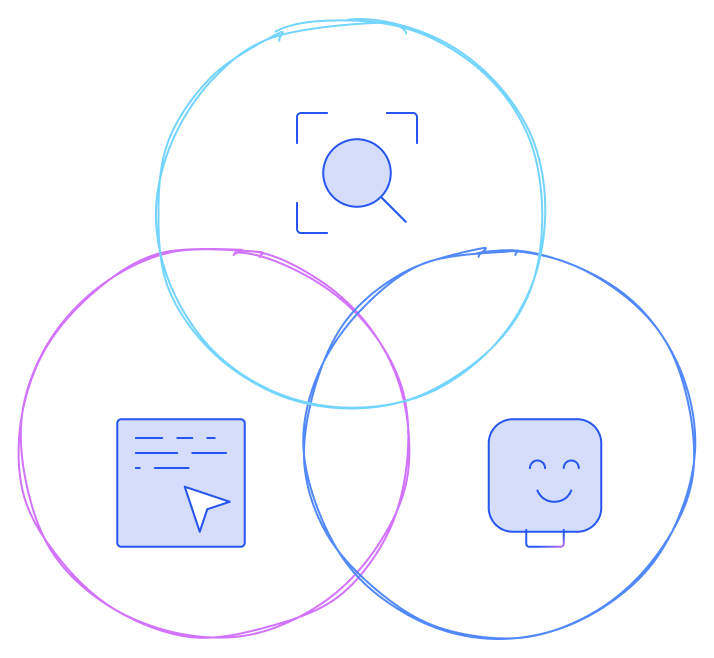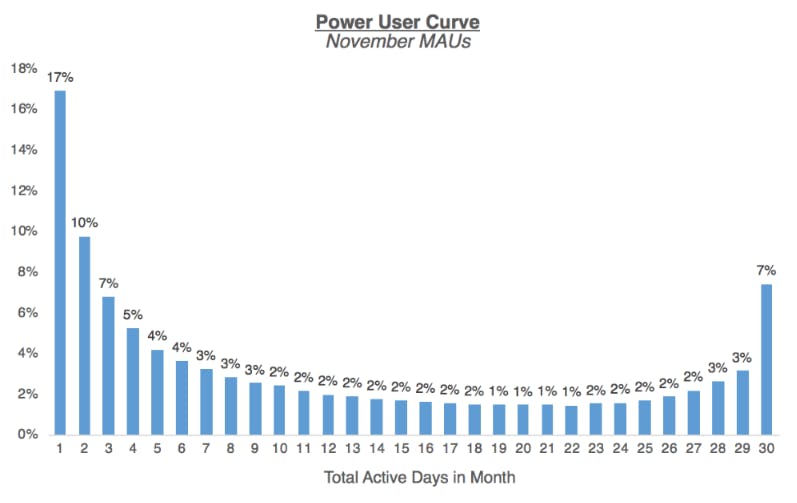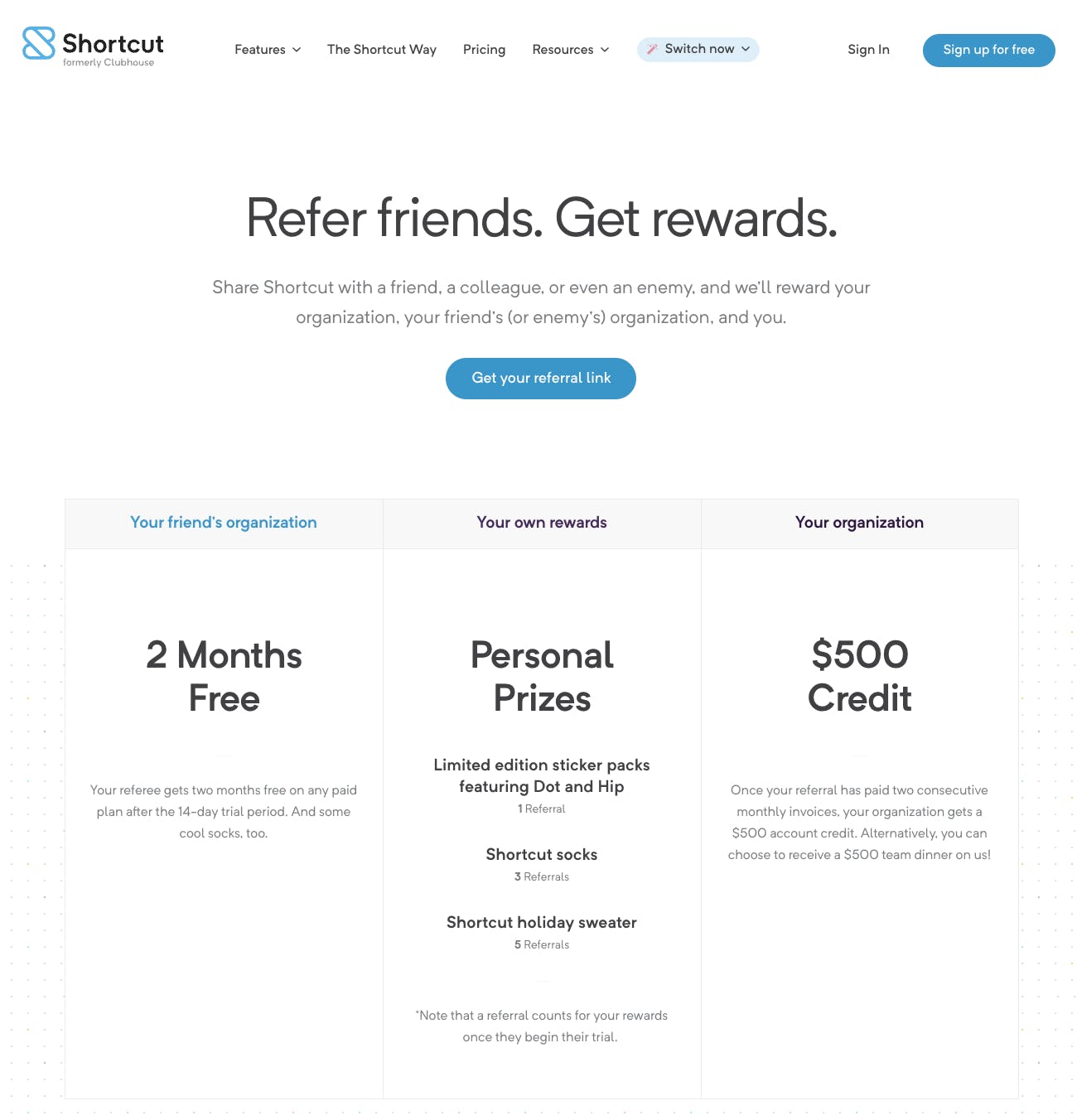Why every app needs a power user strategy

The term “power user” gets thrown around a lot, but can mean very different things.
James Evans is co-founder and CEO at CommandBar, a user experience software company that makes tools to help product teams build faster, simpler, and more delightful software. Find James on Twitter: @dazzeloid.
1. Power user by demographic. These are users that fit into a certain mold of software user. They tend to be technical, they are adept at using software, and they like certain features like dark mode.
2. Power user by usage. Users who use your app a lot.
3. Power user by happiness. Users who are advocates of your app.
The degree to which these three circles overlap will depend on the app in question. Some apps, like dev tools, tend to cater exclusively to Type 1 power users. Other apps, like HR software, might have plenty of Type 2 power users but no Type 1’s. Hopefully, every app has at least a handful of Type 3’s :)

This article focuses on Type 2: how to nurture these users and harness their energy to propel your business forward.
What does “use a lot” mean?
We need to be more specific about our definition of Type 2 power users. The definition of high usage of course depends on the app in question, but there are several common definitions:
Engagement: Power user is often synonymous with Daily Active User (DAU). This definition makes no sense though for infrequently-used apps, like many B2B apps. A better way to use this definition is to look at your most engaged users. We find that most of the time if you create a graph where usage is on the x-axis, there will be a pretty clear non-linearity towards the right of the graph. There is often some common reason that a small group of users uses your app a lot. For example, an HR software tool might have a small group of users who work with multiple clients as outsourced HR providers, requiring them to log in much more frequently than an in-house HR team. This might not mean every day, but it should mean more than other users.
For example, a popular Facebook app, Circle of Friends, had 10 million users. But there was a problem. Too few people were actually using the product. However, digging through the database they found a segment of users—moms—that bucked the poor engagement trend. The numbers were so compelling they pivoted and re-launched as Circle of Moms. (Lean Analytics, Croll & Yoskovitz)
Critical actions: The problem with engagement is that it doesn’t always correlate with value. Someone might log in frequently to your app but only use a sliver of functionality. (NB: if you see this cohort, you should still work to understand them! Maybe there is some low-hanging fruit that will allow them to get more value.) Instead, you can define your power users by the group that goes down some critical path frequently. And no need to have just one critical path! For example, a social media company could define power users as people who post most frequently. If you define active users as those who have performed this critical task, then you’ll see a “smile” like curve when things are good and you have power users.

(Source: Andrew Chen)
What they can do for you?
It seems pretty obvious that you want to maximize the number of Power Users in most situations. Who wouldn’t want more DAUs? If you do this, isn’t the battle for PMF won? You have made something people want.
The question then becomes, what do you do with these people? There are a few answers, ranked from obvious to underrated.
1. Upsell them — Users who are using your product a lot are great candidates to sell more to.
2. Retain them — A lot of these users are probably paying you already. You don’t want to neglect them.
3. Turn them into advocates — The difference between a user who silently uses your product and one who wins you more users by being a vocal advocate is enormous.
4. Use them for research — Power users can help you find subtle flaws or new use cases.
5. Double down on them, or don’t.
Double down on them, or don’t
Identifying your first power users is like cracking nuclear fusion for an early-stage startup: you conjured something out of nothing and generate a vast amount of energy from them. By definition, these users will give you a lot of feedback — through chat, email, slack, or however you interact with your customers (if you don’t do much customer interaction today, you should).
This feedback is intoxicating, for a few reasons.
- It is so fun to have people care about your product. Especially if you’ve been searching for PMF for a while.
- Finally, someone is telling you what to build! It can feel like you’ve gone from 0 to 1, and now all you need to do is build all the things your power users are telling you to build.
You’ll see a lot of advice like “don’t build what users tell you to build; instead, build solutions to problems they have.” This is good advice most of the time, but sometimes it does make sense to make your power users extremely happy by quickly building things they want. This is one of the (only) superpowers early-stage startups wield.
Before doing so, you should take a moment to closely inspect your power users and answer these questions:
Could I 100x clone my power users today? Are there enough look-alikes in the world?
- You may have attracted a weird set of power users who are in love with your product but don’t represent a big opportunity for growth. For example, if you’re building a product that has attracted 15 power users who specialize in deep-sea iPhone retrieval (for people who lose their iPhones on cruises), there probably aren’t that many of these people to go win beyond this initial 15. As a result, overfitting their needs could be a waste of time.
If so, would I want to 100x clone my power users today? At scale, would they help or hurt my business?
- Don’t overthink this one. the answer is usually yes: more happy users are almost always a good thing, especially if they’re paying you more than you spend to acquire and serve them and/or educate the market about your product.
- A few scenarios where you might answer no to this question are:
- The power users you’ve acquired are by definition extremely expensive to serve or extremely unlikely to pay.
- Maybe your team just doesn’t have a passion for serving these users. Imagine a world where you do nothing but talk to these people all day. Is that a happy future for you?
After you’ve answered these questions, you are free to apply the strategies below.
Use them for research
Power users by definition explore more of your product than other users. You can leverage them for two types of research:
Product research: Enroll your power users in a “Beta” or “Labs” or “Early Access” program. Set up your build pipeline so that updates you ship to your product go to these users first, before being deployed to GA. Give these users an easy way to report bugs and give feedback, like an omnipresent button or a Feedback command in CommandBar.
To make this program useful, you have to keep your power users excited about it. That means:
- Make the invite special. Send your power users a personal email telling them they have unlocked the opportunity to participate based on their usage of your product so far.
- Don’t treat this as your staging environment and ship buggy code. You don’t want to break your product for your best users.
- Tell participants what they’re getting access to. When they log in, tell them what’s new since they’ve been gone, emphasizing the new features. A special tip here is to tell participants that some features may or may not make it into GA. This does two things:
It makes them feel special — they are seeing features that most users might never see. (Sidenote: this is why the author used to feel so excited to participate in early developer releases of the early Mac OS X operating systems).
It encourages them to leave feedback — if they like a new feature but don’t speak up, it might go away!
- If your Type 2 Power Users aren’t Type 1, then they may have never participated in a Beta program before. So you’ll need to do a bit of extra education to help the understand what it means. Consider creating a library of in-product videos to explain the program, or offer to get on a 1:1 call to talk about it.
You will get tons of usability feedback and bug reports this way. HashiCorp does a great of this. They’ve built what they call “practitioner-friendly” software by deliberately and continuously incorporating feedback from their community of users into their software products. This is an intentional strategy, aimed at harnessing the enormous amount of insightful feedback they receive across GitHub Issues and in their forums.
Market research: Once you’ve decided to double down on your power users, you need to understand what other problems they have that you can help solve. How do you do this? Asking “what do you want me to build for you” directly is hard and subject to the faster-horse problem. Instead, try to create a situation where you can ask them about their lives.
- What other software do they use?
- What do they spend their day doing?
- What are their greatest frustrations in life?
More of these questions can be found in the excellent-but-unfortunately-titled Mom Test.
Here is a list of ways to ask these questions:
- Offer to pay them to do an interview. Instead of cash, you can offer product-specific rewards like free credit. Or you can go hard and offer a StartupBuck: “if you do this interview we will build 1 feature that you request, subject to it being straightforward”.
- Invite users to a “Get to know other users” video chat where they can meet other users of your product. This is great for building community, but can also be a great firestarter for conversations that contain nuggets of insight about your users’ problems.
What do you do once you figured out something else you can build for your power users? Don’t just build it. Per the Mom Test, an important intermediary step is extracting a concrete commitment for your power users to validate the opportunity.
- Will you pay me more if I build this?
- Will you meet with me every Friday for a quarter to review the progress on this feature?
- Will you introduce me to 10 of your friends you said had a problem this feature would solve if I build it?
Turn them into advocates
Investors love talking about unit economics for good reason: Customer Lifetime Value / Customer acquisition cost is a great framework for understanding a recurring revenue business (or any business). A standard CLTV / CAC equation will look like this:
- CLTV = how much the customer pays you over time - cost to serve them (e.g. support, storage)
- CAC = how much you pay to acquire the (e.g. how much did you pay Google to generate a single conversion from clicks)
This is a double click on the economics of the marginal customer. The goal is for this ratio to be as high as possible.
Consider what happens to this ratio when a power user recommends another user to use your product. You can represent it in two ways:
- Higher CLTV: attribute all of the LTV from a recommended customer to the customer that referred them
Pedantic caveat: was the customer truly incremental? Or would you have probably won them anyway? This is really hard to assess on an individual basis. A rule of thumb is only to attribute some percentage of referred customer’s CLTV like 80%.
Not-so-pedantic caveat: double-check that referred customers have similar CLTV to the referrer. This is a common trap: a power user refers other people to your product because they are so excited about it, only to find out that their friends are less passionate and churn quickly. Keep an eye on the cohort of referred customers to assess their CLTV checks out.
- Lower CAC: you didn’t pay anything for this referred customer, so your average CAC goes down
Not-so-pedantic caveat: you spent time and money making your power users happy. You can think of that as CAC for future referred customers. This is probably not worth quantifying, but don’t feel like you’ve found some magic zero-CAC channel and eschew all paid acquisition if it’s working for you. Paying Google for clicks that convert well is a well-trodden path for a reason.
That was a lot of pedanism to convince you that referrals are good. Now let’s talk about how to do that.
- Delight them with power user features: For example, keyboard shortcuts get used a lot by power users. In CommandBar, for example, for commands with shortcuts attached, a staggering 95% of command executions come from a keyboard shortcut. This is because power users who spend a lot of time in your app are keen to adopt shortcuts, and when you delight them with features like this, it helps them go from power user to advocate.
- Create a referral program: For B2C products, these are classic growth hacks. Give your power users some incentive to refer others, either cash or some in-product power-up. Shortcut gives out swag. Dropbox gave users free storage. If you want to be a bit devious, you can make the power-up timeout to incentivize continual advocacy. For example, free storage that times out after 30 days.
- Make it easy to share. This could be a great product overview video that is fun and not stilted. No one wants to share a generic, faceless B2B marketing video with their friends, even if their friends have similar problems that could be solved by the product. You don’t need to make the aesthetic ridiculous, but put more creativity into it than you would for a video introducing a new feature. Or make the product itself shareable. Codepen and Adobe/Behance run regular creative challenges where people use their products and share their results. While Notion’s Template Galleryand Airtable’s Universe are examples of user-generated template libraries that folks can share and give other users a jumping-off point to adopt their product.
- Build a community around your business - enable your power users to get together, either virtually or in-person. Host actually-fun events and tell users they can get invited by bringing a friend: channel your inner timeshare company. Do something like a virtual pizza party group gathering with a fun speaker, something you would actually want to go to. Make the cost of attendance and bringing a friend a no-brainer. Or better yet, empower your users to run their own events. HashiCorp’s User Groups (HUGs), for example, are user-run events that they support with things like content, speakers, swag, or funding for food and drinks. In doing so, they enable members to meet up in person and share best practices and build relationships and at a scale an internal team would struggle to manage. HUGs, for example, reach almost 40,000 people, with 149 groups in 53 countries.
Another community-led approach is to make it ridiculously easy for users to share their product experiences and tips with each other. Customer success forums are particularly effective at bringing together product champions who are eager to connect and share best practices. Airtable’s Community Forum is an especially good example.
- Celebrate them at every opportunity: send marketing emails shouting out users who refer, celebrate them at your user conference, send them a personal thank you when they do. Monetary rewards are fun, but knowing you helped out a fledging business is much more better. Even if you have a B2C business, you’ll get even more bang for your buck because people aren’t used to hearing from management of B2C products that they used. An inventive approach is Lululemon’s Global Ambassador program and Twilio does a great job with its champions program. Glitch does a good job of curating member-created apps in a monthly digest that inspires people to remix them and make them their own. Taking things a step further, Figma productizes this idea by building a community showcase into their core product.

Shortcut’s referral program
Retain them
This is number 4 on the list for a reason: you are almost already thinking about this. The CLTV / CAC equation starts to look really bad when your best users start churning.
Here are a few tips for retaining your power users:
Conduct exit interviews — if someone used your product heavily and then churned, they will probably feel some emotional commitment to telling you why they churned, especially if you’ve interacted with them before. You can harness this by reaching out to do an exit interview with those who did churn. When you reach out to schedule this, reiterate that you are not trying to win them back. You can use this email template:
Hi Bob -- This is Sally from ShineSpot. I was so sad to see your name pop up in
the list of closed accounts. I know you used ShineSpot pretty heavily since
<insert date they signed up>. Would you be open to a 15 minute chat to
understand how we can help better serve the next Bob who rolls around?
Don't worry, this will not be an attempt to pressure you into changing your
decision.
-Sally
Conduct regular check-ins — it’s easy to assume that usage = happiness = low churn risk. This is not a good assumption. You should bake into your schedule time to talk with your power users. You can leverage this for research, but it’s also a great outlet to ask open-ended questions about their happiness. “How’s it going with ShineSpot”?
Leverage in-product tools for happiness — NPS questions are pretty stilted but effective. You can get even further by leveraging a tool like HotJar that lets you ask a variety of in-product questions to users in a low friction way.
Upsell them
The most obvious: users using your product a lot should probably pay you. You should inspect the cohort of users who are using you a lot but aren’t paying you very carefully. Some reasons they might not be paying:
- They don’t have the money — if this is the case, you should ask yourself how these users can lead to money. Could their boss pay? Could their friends pay? Do I need to make my product cheaper?
- They don’t know how — this is unforgivable. Every page of your product should make it easy to upgrade. You can do this using a persistent button (annoying) or a command in CommandBar that lets users search for “upgrade” (or any other vocab words).
- They don’t see value in upgrading — you might be fine with this if you have other people paying you. For example, maybe you have a free tier for small customers and an enterprise tier for big customers. The free tier might be very worth it as a way to generate referrals, and hopefully some small customers grow into big customers. If that’s the case, it’s probably not worth agonizing how to squeeze money out of small customers. However, if your plan is to make money from this cohort, then you should consider the upgrade architecture of your product. Why should people upgrade, and is the value clear to them? One way to solve the second problem is to meet users at the point of upgrade: when they encounter a feature naturally (like stumbling across a gated page or searching in a CommandBar) present them with a mini-checkout page: present the case for the feature, give some social proof (who else is using the feature), and a big “Upgrade now to get immediate access” button.
Beware the Power User Trap
Many product teams over-optimize for power users and neglect the rest of their user base. While others ignore their power users, and in doing so alienate the very people who are gaining the most value from their product who they could have learned from. Both teams are falling into the power user trap.
There’s a balance to be had. What you need to do is deeply understand who your power users are and why, and then incorporate them into your broader product strategy. That way you ensure you’re making the most of your power users - nurturing them while harnessing their enthusiasm to propel your business forward, but leading your product in a healthy direction.
This article was written by James Evans from CommandBar.
Comments (5)
Gareth Wilson
Chetan Natesh
Founder of Rozmer
TravelMan
Solo developer
Ken Goal
nothing to lose
Ashish Dalal
More stories

Aaron O'Leary · Announcements · 2 min read
Introducing Shoutouts

Finn Lobsien · Opinions · 5 min read
Can Devin AI Replace Product Managers?

Aaron O'Leary · News · 2 min read
Meet Nvidia's new localized AI chatbot

Sarah Wright · News · 2 min read
The top 15 AI products from 2023


